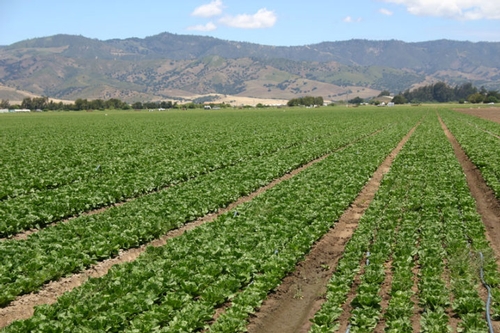What makes food grow - and why that matters
There’s a lot of attention paid to where food comes from nowadays. Less attention has been paid to what helps that food grow, but that’s an important part of the equation. Whether organic or conventionally grown, the tomatoes, lettuce, plums and other food we eat rely on nutrients in order to grow. One of the most important nutrients for plant productivity is nitrogen.
Nitrogen, which is ubiquitous in our atmosphere in a relatively inert, gaseous form, is not available to most plants unless it is transformed into a reactive form and added to soil, where plants can use it to grow. Most often nitrogen is applied to fields in the form of synthetic fertilizer, although organic production relies on other nitrogen sources, such as cover crops, manure, fish meal and poultry waste.
Agricultural production depends on nitrogen in order to grow reliable, high yielding crops. But this nitrogen, when it is applied to fields in the reactive form that plants can use, also tends to leak out into air and water and cause pollution when all the nitrogen applied to the field is not used up by the plants.
The California Nitrogen Assessment, a project of the Agricultural Sustainability Institute at UC Davis, is taking a hard look at the whole system of nitrogen use in California. While nitrogen is hugely important to producing the food and fiber that we all need, there may be ways to use it more efficiently and reduce the pollution problems it can cause. These problems include air and water pollution, which can have negative consequences for human and environmental health in California.
Since nitrogen is so important to producing the food that all of us eat, the Agricultural Sustainability Institute’s team has involved stakeholders from all around the agricultural system. The assessment team has sought insight from farmers and economists, policy makers and public health groups, and Californians whose drinking water has been polluted by nitrogen, forcing them to buy bottled water on a regular basis. There are many diverse perspectives and ideas about how nitrogen should be managed in California’s future. The assessment will provide a synthesis of the most up-to-date scientific knowledge on science, policy and practice to inform decision making on how to improve nitrogen management.
Thinking about where food comes from is one important part of understanding the food system. Learning about the trade-offs involved in other key agricultural inputs is another.
Find out more about nitrogen and the California Nitrogen Assessment at its website. If you are interested in becoming involved in the assessment as a stakeholder participant, visit the website for more information to learn how you can get involved.


